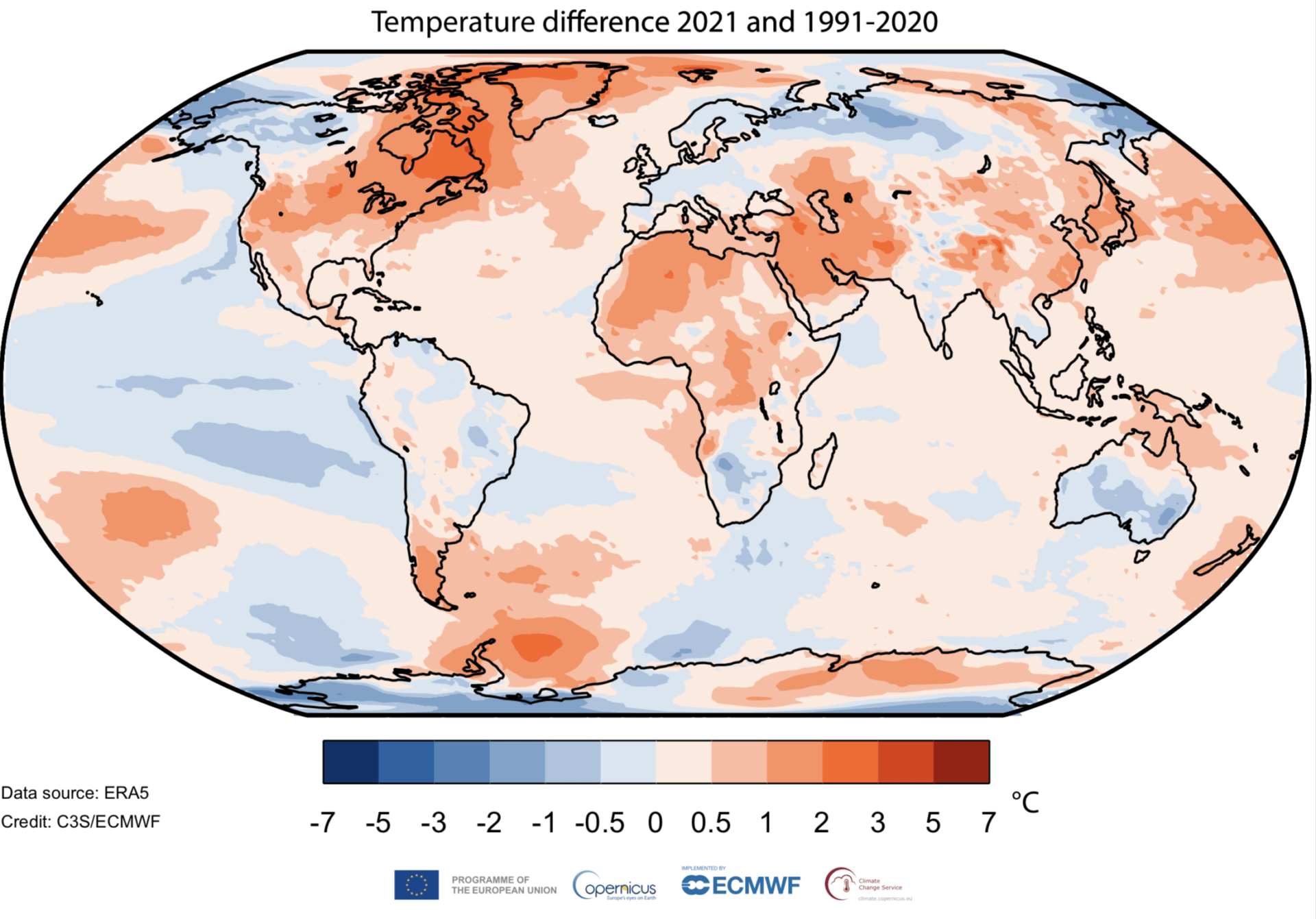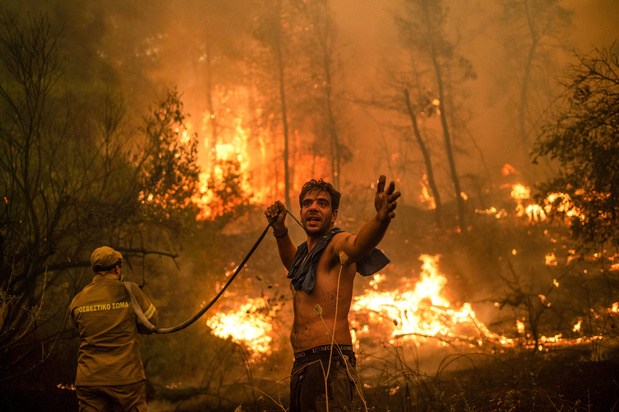Globally, the last seven years have been the warmest on record by a clear margin, according to the latest report by the European Union’s Copernicus Climate Change Service.
All of the warmest years on record were measured in the last seven years, Copernicus' annual findings published on Monday revealed. The organisation regularly publishes data on sea ice and surface temperatures both regionally and globally, giving a detailed image of climate change.
"The last seven years have been the seven warmest on record. These events are a stark reminder of the need to take decisive and effective steps toward a sustainable society and reduce net carbon emissions," said Carlo Buontempo, Copernicus' Director.
Although last year ranked among the cooler years globally, alongside 2015 and 2018, it made history as the year of weather extremes, with record-high temperatures in Canada and the United States sparking extreme wildfires.
In Europe, weather varied hugely. Overall it was the warmest summer on record, with severe heatwaves and new heat records set in the Mediterranean; meanwhile western-central Europe, which includes Belgium, experienced deadly floods. In Belgium, it was the wettest ever recorded.

The last seven years saw the highest global surface temperatures being recorded. Credit: Copernicus.
The graph highlights how global temperatures have risen in the last 50 years (between 1970 and 2020), showing that we are nearing the threshold of 1.5°C increase in global warming compared to the reference period 1850-1900 used by the United Nations for its climate targets. In 2016, 2019 and 2020, the global average surface temperature came particularly close to this threshold.
“Europe's commitment to the Paris agreement can only be achieved through effective analysis of climate information," Mauro Facchini, Head of Earth Observation at the Commission's Directorate-General for Defence Industry and Space, stated.
The increase in temperatures recorded in 2021 in the United States and Canada, as well as large parts of central and northern Africa and the Middle East can be seen on the Copernicus temperature map below.

Air temperature for 2021, shown relative to its 1991–2020 average. Source: ERA5. Credit: Copernicus Climate Change Service/ECMWF
The darker the red of a zone, the warmer it is becoming; blues indicate a reduction in temperature.
Record-high greenhouse gas emissions
The two main greenhouse gases – carbon dioxide (CO2) and methane (CH4) – continue to accumulate in our atmosphere with Copernicus observing no signs of improvement. In April, CO2 particles in the atmosphere (ppm or parts per million) reached a record of approximately 414 ppm.
The methane concentrations rose at a higher rate in the last two years than in the last two decades. There is currently 1.876 ppb (parts per billion) of methane, according to preliminary satellite data.
"At present, it is not fully understood why this is the case," the climate change service stated. There are many sources of methane: from anthropogenic (e.g. exploitation of oil and gas fields or raising cattle) to natural or semi-natural ones (e.g. wetlands).
Worldwide carbon emissions increased by 1,850 megatonnes in 2021 compared to 2020, largely driven by wildfires – in Siberia particularly.

